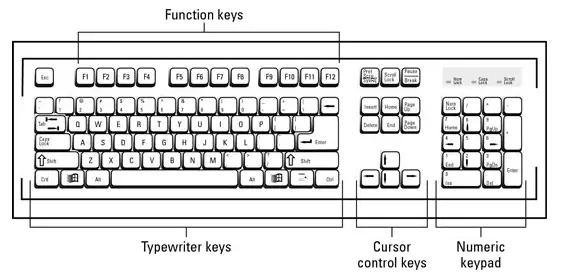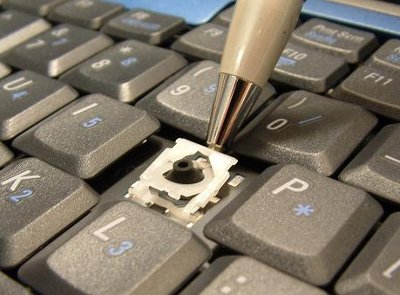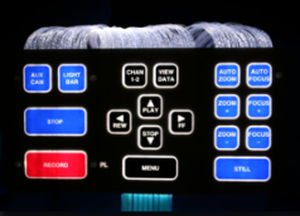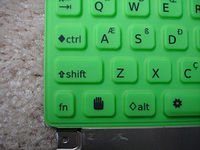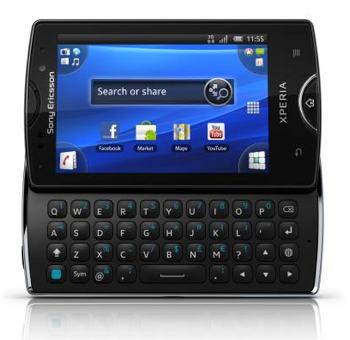Types Of Keyboard
There are two major types of computer keyboards: Basic and Extended. The Basic keyboard contains 104 keys and is enough to perform all the functions that can be done on a Windows PC. The Extended keyboard may have additional keys, and the design varies among the companies manufacturing them. These are usually customized keyboards that are specific to certain operating systems or applications. The best example I can think of, for Extended keyboards, is the Windows keyboard designed by Microsoft for use with its first “start screen” operating system.
Types of keyboard technologies
The Windows Club has already covered some good keyboards from Microsoft. We will be looking at them in a while. Before that, let us take a look at the different types of keyboard technologies. When I say keyboard technology, I speak of the mechanism that is used to send signals to the computer that a key was pressed or, a combination of keys were pressed. The work of translating key presses into digital information (key press, code of key, hold time, repeat instances, etc.) is done by the device drivers of the keyboard. You need not worry about drivers of keyboards as Windows OS has them built-in for most of the keyboards. Rarely, you may have to install keyboard drivers separately – in the case of special, extended keyboards. Read: Best Mechanical Keyboards for Gaming and Work.
Scissor Switch Keyboards
These are the most common types found in notebooks and netbooks, especially from the HP and Compaq range. The keys are formed by a pair of plastic pieces that intertwine as if a scissor. When you press the key, they are flat across each other and touch a particular keyboard point to complete a circuit. This done, the keyboard driver determines the key pressed and sends the information to input buffer from where your operating system takes over the information. The advantages of this type are that you need not press hard as the travel time of any key to the circuit board is very less. The problem is with cleaning as you cannot move the keys. A blower should help, but the better method to keep such keyboards clean is a precaution – avoid using them in areas with dust or when traveling, with windows open.
Flat Panel Membrane Keyboards
These are not generally used as computer keyboards. You can find them on printers and photocopiers. They have two plastic membranes parallel to each other. The lower one has a conductive strip places just above the contact points over the keyboard base. The upper one has signs (alphabets, numbers or icons) just opposite to the conductive strip. When user touched any sign, that part of membrane goes down to push the conductive strip to the contact points, triggering off a key-press. Since there is no audible warning on its own when pressed, these keyboards incorporate a beep sound or visible warning such as lights to tell the users that key-press has been registered.
Full Press Membrane Keyboards
These are the most common type of keyboards found on desktops these days. You can relate them to the old-fashioned remote control boxes, only that, in the case of computer keyboards, they do not easily give out that they are just a bulge waiting to be pressed. Each key is a separate plastic cup that goes down when pressed. Logic is the same as the others: when you press any key, the membrane shrinks so that a full circuit is formed to send out a key-press event to the computer. Easy to clean and tough to handle, this type is better for all types of environments (except underwater?).
Direct Switch Keyboards
You can find these in phones, handheld devices and things where you need to know you pressed a key irrespective of where you are. Keys on these keyboards give you positive feedback (a crisp feeling telling your fingers that you pressed a key). They are usually some metal conductors covered by plastic on the upper side that contains signs (numbers, alphabets, and icons). The base plate is usually gold plated for better conductivity. When you press any key, the metal conductor goes down to the plate and creates a complete circuit to tell the computer that a key has been pressed. A good (not exact) example of the keys would be the mouse keys. The way you can tell the physical feeling on your finger when you press a mouse key, it is a direct switch key.
Good Keyboards For Windows PC
The following are some of the good keyboards that have already been reviewed on The Windows Club. I am presenting a summary of the keyboards here. Click the links accompanying each of the following to read the full review of that keyboard by the other authors of The Windows Club.
The Microsoft Arc Keyboard
Looks like an art piece, a finely crafted artwork that doubles up as a keyboard! The first thing you will notice with this keyboard is that it does not have the traditional arrow keys. In fact, all four arrow keys are drawn on a single key that goes down in four ways, each triggering a different kind of arrow key press.
The Microsoft BT Mobile Keyboard 6000
Another design by Microsoft, this is just the perfect thing for use with all types of Windows devices: from desktop PCs to Windows Phone or even Android phone. The design is a curve, making it easier to type for long hours. The best part is – you can keep out the numeric keypad part. Most of us used to typing on notebooks, the presence of number pad is often very irritating and space consuming. If you think you won’t need it, just keep it in the bag/pouch wherever you took it out from. And yes, the keyboard is very slim, allowing you to keep it over a notebook whose built-in keyboard is damaged!
The Microsoft Desktop Keyboard 2000
If you love the sound of keys striking the base of keyboard circuits, this keyboard is for you. To add to the experience, Microsoft claims it encrypts the wireless key signals as they travel on radio waves to the USB receptor on the computer. It comes with a mouse that can be turned off when not in use – to save on battery. You would not notice anything special simply by looking at it. The fun begins when you start working on it: easier to type plus the physical feedback of key-press! The plus point about the keyboard is it has dedicated blue-colored keys especially for Windows 10/8/7.
